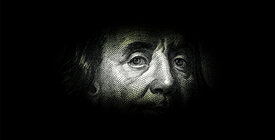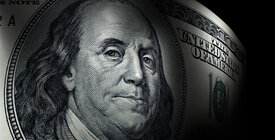Wealthy donors giving at least $5 million to support a presidential candidate are spending more than twice as much as they did in 2020. That’s according to our new analysis of data from the Federal Election Commission looking at super PACs that are devoted to supporting Kamala Harris or Donald Trump. Most of that increase is attributable to the effort to elect Trump, who has outsourced much of his campaign to affiliated super PACs that have raised almost three times the amount from $5 million-plus donors relative to those boosting his last campaign.
Super PACs closely aligned with major candidates have become regular features of presidential elections. Over the years, the lines between official campaigns and these nominally independent groups have become more and more blurred, to the point where the press often treats these super PACs as a part of each party’s campaign apparatus. This attitude is understandable, given the extremely weak federal rules that supposedly limit the contacts campaigns can have with outside groups.
These entities are also increasingly relying on the biggest of big donors. This election, the biggest super PACs supporting the major party nominees for president have together taken in $865 million from donors who each gave $5 million or more. That’s more than double the amount by this point in 2020, which was $406 million. This biggest-spending category of donors has provided more than 75 percent of the funding to presidential super PACs in the 2024 election, up from 63 percent in 2020.
Both parties have increased their reliance on $5 million-plus donors, but not to the same degree. Super PACs backing Harris raised about 50 percent more from these donors than those supporting Joe Biden had by this time in 2020. Most of the growth comes from the pro-Trump camp, where donors of $5 million or more in 2024 gave $522 million, almost three times the $180 million they provided in 2020. This is a complete reversal from Trump’s first run in 2016, when he relied largely on small donors and had relatively little big money support. This year, supportive big-money super PACs are outspending the Trump campaign itself.
The vast majority of money given in donations of $5 million and up comes from individual donors, but some donors to the super PACs are groups that have raised money from others. That includes, most prominently, dark money nonprofits that do not disclose their donors, as well as corporations and unions. Although some of the original contributors of this money no doubt gave less than $5 million, we include the amounts here because the money was pooled and leveraged for political use by the groups’ leaders. Judging by occasional revelations of donations, it’s likely that large dark money groups rely heavily on megadonors.
This presidential race has so far attracted three individual donors who gave nine figures each to-date, all to support Trump: banking heir Timothy Mellon ($150 million), tech mogul Elon Musk ($119 million), and casino owner Miriam Adelson ($100 million). The largest individual donor pro-Harris groups have reported is Dustin Moskovitz, also from the tech industry, who gave $38 million. The pro-Harris super PACs’ largest donor overall, however, is Future Forward USA Action, a nonprofit that doesn’t disclose its donors and has given its affiliated super PAC $136 million to date; reportedly, $50 million of Future Forward’s money has come from Microsoft founder Bill Gates. Dark money groups are also working to elect Trump. The largest appears to be Building America’s Future, which has reportedly raised $100 million over four years, including donations from Musk.
The growing reliance of presidential campaigns on affiliated outside spending ultimately serves to undermine existing campaign contribution limits and transparency rules. This is a long-standing concern that the Federal Election Commission exacerbated this year by allowing, for the first time, campaigns and putatively independent super PACs to coordinate on get-out-the-vote activities, inviting unprecedented levels of reliance on megadonors for basic campaign functions.
Congress can help restore guardrails by strengthening the rules that limit coordination between campaigns and super PACs, as well as improving disclosure. Legislation to accomplish this came close to passing in the last Congress and is likely to be on the agenda in the next one.
Research provided by Sonali Durham.







